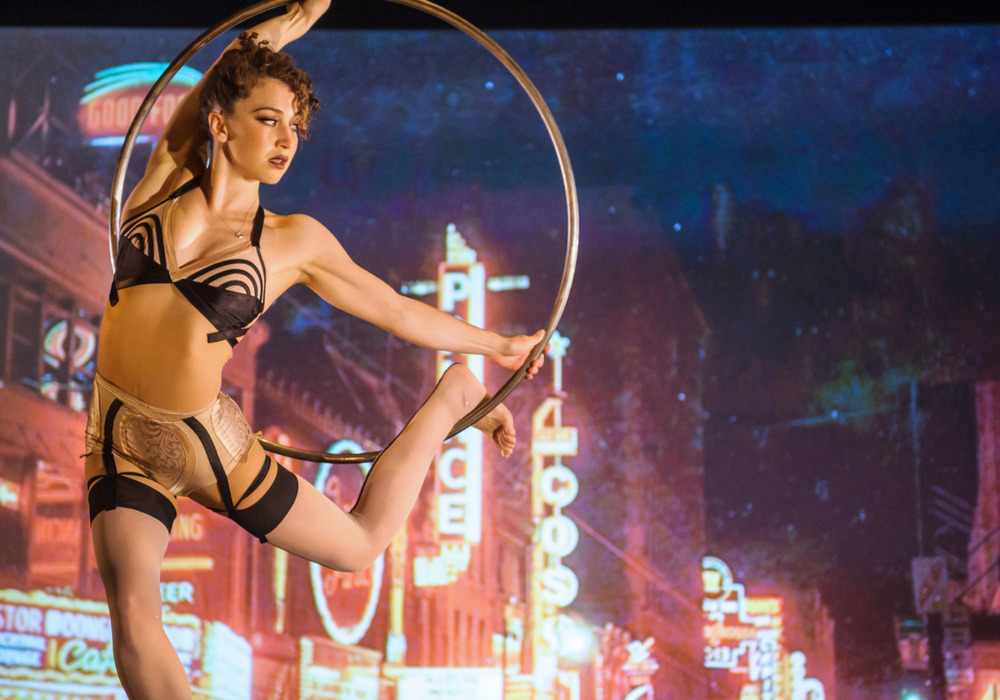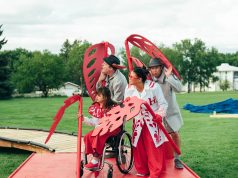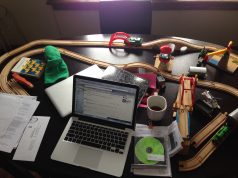
This summer, I led the first international graduate field school in Québec Performing Arts with a particular focus on contemporary circus, but as it has engaged in dialogue with theatre and dance in Québec.
Circus as the focus of academic inquiry and scrutiny? Absolutely.
Contemporary circus—the non-animal, acrobatics and narrative-based one, is a hybrid form of artistic performance and elite sport. The particular case of Québec-based circus with its billion-dollar economy is a fascinating one as one can easily expand its study to include marketing, global business, creativity and experience economies, as well as its international reach through cultural paradiplomacy. Concordia University’s Dean of Arts and Science’s initiative for international summer field schools allowed me the opportunity to offer a graduate level seminar on the research I conduct and regularly present internationally, but never actually get to teach at my home institution where circus didn’t quite fit into my otherwise very literary home department.
In a world of hyperspecialization and more narrowly focused newsfeeds and interests, circus in Québec, circus from Québec and across the world —contemporary circus in general— have allowed me to create a fundamentally interdisciplinary research space, while slowly contributing to an emerging field with Montreal as its North American hub.
From July 7 to 17th, 18 students from Concordia, the National Circus School, and McGill, but also students from Toronto, Chicago, Mexico, South Carolina, and Italy came together to spend 12 hours a day together, every weekday, plus some weekend events, seeing, discussing, analyzing contemporary circus presented at Montréal complètement cirque festival, some magie-nouvelle, and two immersive large-scale multimedia experiences.
What did the field school offer? Access to an international circus festival and its professional programming of panels, discussions; to the National Circus School, Cirque du Soleil, and TOHU (the only permanent theatre devoted to contemporary circus in North America); and to major artists giving guest talks.
It also offered space for practitioners and scholars and some conflicted practitioner-scholars to discuss: a safe space for doubt, for challenging one’s assumptions, for learning, for creating a research community. It also offered a rare, prolonged opportunity for academics, practitioners, a producer and many guest speakers to exchange and to come to appreciate each other’s perspectives over ten long intense days.
Professional artists coming to the field school, many returning to school after a decade or more of work were challenged by “outsiders” trying to deconstruct, analyze, understand their art and profession but without actually practicing it. How can one stand in judgment without embodied knowledge of how difficult and complex the execution of certain acts or tricks (at a high technical proficiency and prowess)? They spent years in training to accomplish this. However, they came to understand that their academic peers came to a disciplined and methodological way of reading and discussing performance, artistic discourse, aesthetics, history, and after years of academic training. The practitioners were now learning critical thought and were confronted to many of the paradoxes that emerged.
Performance Studies-trained students problematized and found issue with representations of body, race, gender, as they are taught to do. However, they were also confronted by artists explaining their process and choices, elaborating on the context in which the work was either commissioned or presented (mostly Montreal’s 375th anniversary celebrations). They were also made aware of the nitty-gritty details of the artistry, craft, and of the physical demands particular to circus. Their absolute statements became more nuanced questions as the seminar progressed. But these essential questions had a necessary contamination effect on practitioners who hadn’t always questioned their own practice and the important symbolic weight many of their artistic choices can have in a society of constant representation(s).
More classically-trained literary or theatrical types were interested in meaning-making and the dramaturgy of bodies and spectacular feats. What are the tools for analyzing this, they asked. What is the language of circus creation? What do you mean by “disciplines of circus”? How is a circus act different from a theatrical act?
Others sought to understand the cultural context that allowed the unlikely rise and importance of Québec-based circus on the world stage of both circus and entertainment. How did the appropriate conditions come about for such an industry to emerge and thrive where there had been so little circus beforehand? What is the impact of a creative and entrepreneurial ecosystem in which one player is comparable to Disney, but where a diversity of practices and aesthetics do exist outside of that global company.
This plurality of interests and approaches signaled to all that we indeed were before an emerging interdisciplinary field and that for us to seriously delve into interdisciplinary study while keeping in check our own disciplinary biases, assumptions, and ideologies.
We each come to the object of study from a place of particular, subjective knowledge or, closer to the object, of expertise, like a series of concentric circles focusing on the object of study:
- some of us had sociopolitical and discursive knowledge and methods of inquiry;
- others a spectator’s gaze (production knowledge)
- a few more referential knowledge through an experience of circus;
- lesser still an intimate knowledge of the circus world and cultures;
- the practitioners also had a precise disciplinary knowledge and expertise (in circus disciplines fit within larger families: aerials, acrobatics, balancing, juggling and manipulation, clowning).
Yet, a high proficiency and expertise in an artistic and athletic discipline does not necessarily mean a high level of discourse or analysis. Conversely, no matter how well trained the scholar, some intimate knowledge of circus-making has proven essential to avoid sweeping generalities and misreadings. Most of us know this, of course, but to realize this in a seminar setting is to acknowledge that learning and researching contemporary circus is messy and challenging and best explored in the field but with appropriate academic tools and scrutiny. This object of study needed the context of a field school, it needed to navigate between multiple spaces in order to better occupy and engage with them.









